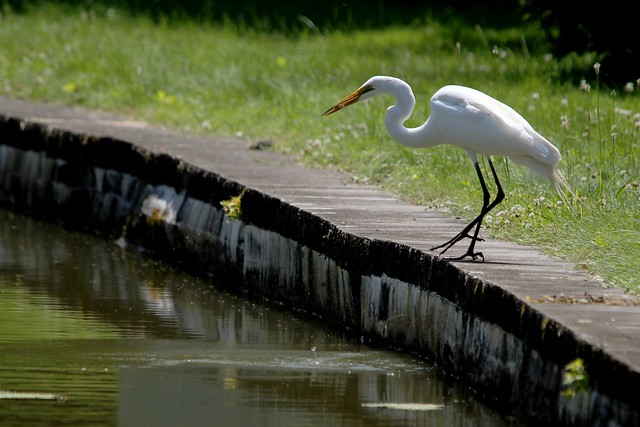 Photo: An egret fishes in a kettle full of algae
Photo: An egret fishes in a kettle full of algaeWe often hear about “carbon footprint“. What does this actually mean? A carbon footprint refers to the amount of carbon dioxide equivalent is being produced for an action or activity. When we refer to carbon neutrality, we’re speaking about ways in which the output of these gasses can be reclaimed to offset the production. Essentially, this means we are offsetting the carbon footprint.
We know that many of the “greenhouse gasses” come from industry, particularly with the burning of fuel. A recent article illustrates one possible way to address this.
The article states:
(Petroleum) was simply ancient algae that had been covered over by shallow seas and then was covered over by silt and dirt,” said Mayfield. “The algae’s proteins and carbohydrates degraded away, leaving the fat, which we call crude oil. So the algae we produce in ponds today makes the same stuff.
So indirectly, this is a roundabout way of harnessing solar energy… but less roundabout than before.





